Last Updated on May 30, 2024 by
I was excited about my fifth visit to Gir National Park. Every visit makes me anxious and my hands tickle for capturing wildlife. Gir National Park is famous for Asiatic Lions. and I was looking forward to this weekend destination from Ahmedabad. Situated in Indian state of Gujarat, it is the only place in the world where you can spot Asiatic lions roaming free in the wild.
Table of Contents
Gir National Park information
Currently, the national park and wildlife sanctuary covers a total area of 1412 square kilometres. From a population of approximately 20 lions in 1913 where the Asiatic Lion numbers were dwindling by alarming rate due to hunting activities, they have now risen to a comfortable 523 according to 2015 census with major efforts from Department of Forest Officials, NGOs and local tribes.
With many infrastructure projects such as railways and high-speed road corridors, as well as port and mining activities nearby, it is certainly affecting the only habitat of the Asiatic lion and is a major cause of concern for their future. However, the King of Jungle and his many associates are adapting and surviving the ever-changing habitat like a boss!
The Park also gives shelter to more than 200 species of birds and is also blessed with more than 40 species of reptiles and amphibians. A large reservoir in the middle of the park – Kamleshwar is the spot where Marsh Crocodile can be seen.
Gir National Park: Weekend trip
After taking online permits weeks in advance (online permits are compulsory and can be availed 90 days in advance for safari) and costs Rs. 800 per person). We drove from Ahmedabad to Gir National Park – a comfortable 350 km ride by road. Stopping at Limdi for a quick breakfast, we continued on Rajkot highway to reach Gir also known as Sasan-Gir by 2pm just in time to have lunch and catch the 3pm safari.
Safari timings: 6am – 9am, 9am – 12 noon, 3pm – 6pm
After a super yummy lunch, we went to the vehicle desk and after showing our online permit we got our open gypsy (which can accommodate 6 people) and allotted guide. A gypsy costs Rs. 1500 for the safari and the guide cost is Rs 500 – all fixed rates. Hence including the permit charges, each safari costs approximately Rs 3500 (for 2 persons).
Day 1: Route 2 here we come:
10 minutes into the safari, we saw a family of Eurasian Thick-knee also known as Eurasian stone curlew or simply stone-curlew. Beautifully camouflaged with the leaf litter this species prefers dry open habitats to dwell. It is largely nocturnal and its food consists of insects, frogs and rodents.
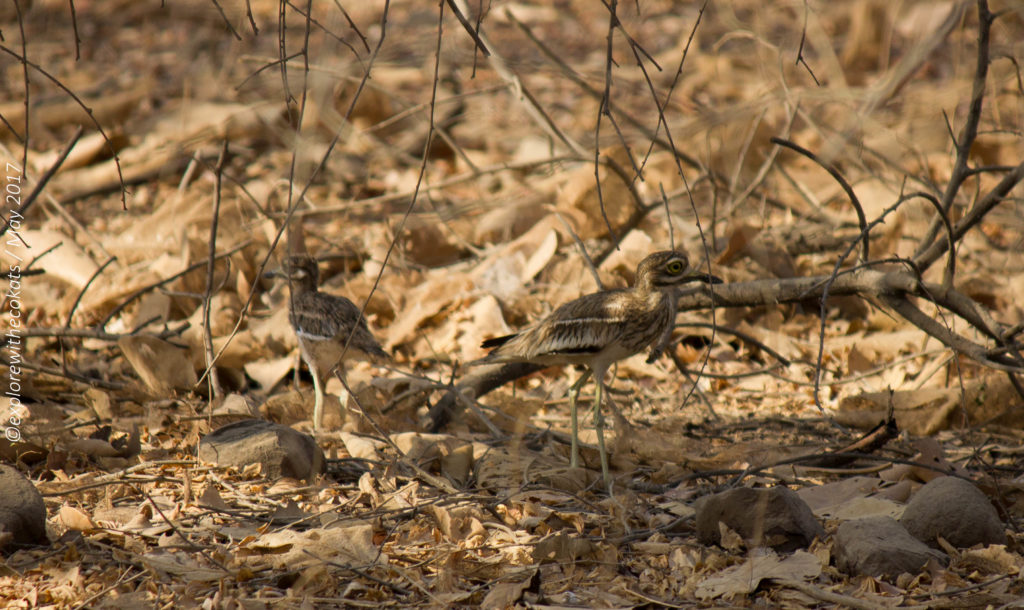
The second species we spotted was Mottled Wood Owl. It was difficult to spot him in all those tree branches but owls are generally known to have their fixed tree branches where they dwell. Our guide knew it and so could show it to us. He seemed to be resting so we headed off next.
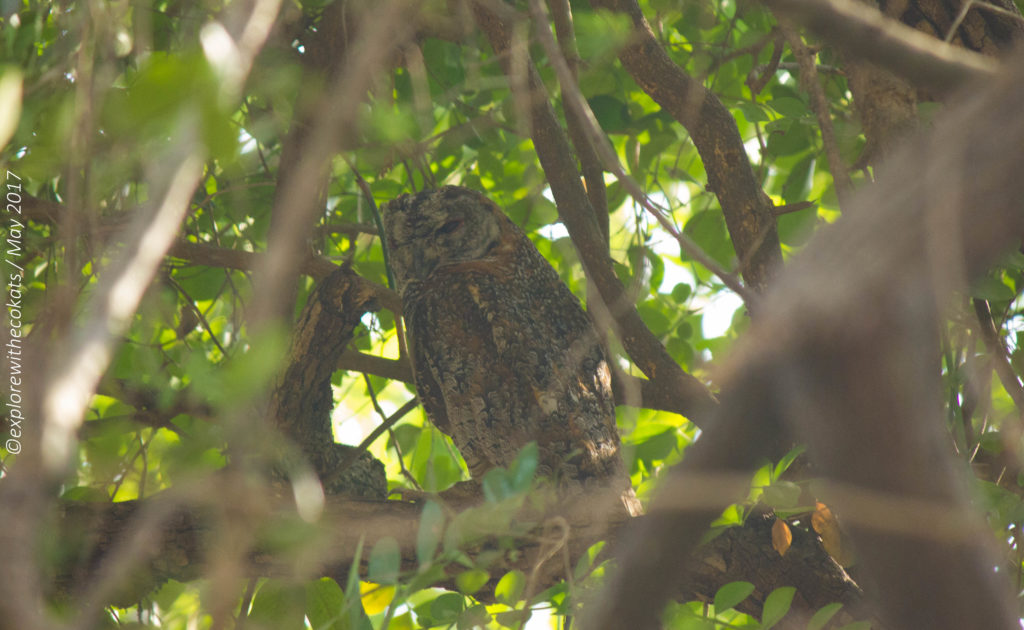
Another bird. This was our afternoon! We easily spotted this large wader – the Red wattled Lapwing or the did-he-do-it bird? Yep that’s exactly how he sounds as if he was saying it loud and clear.
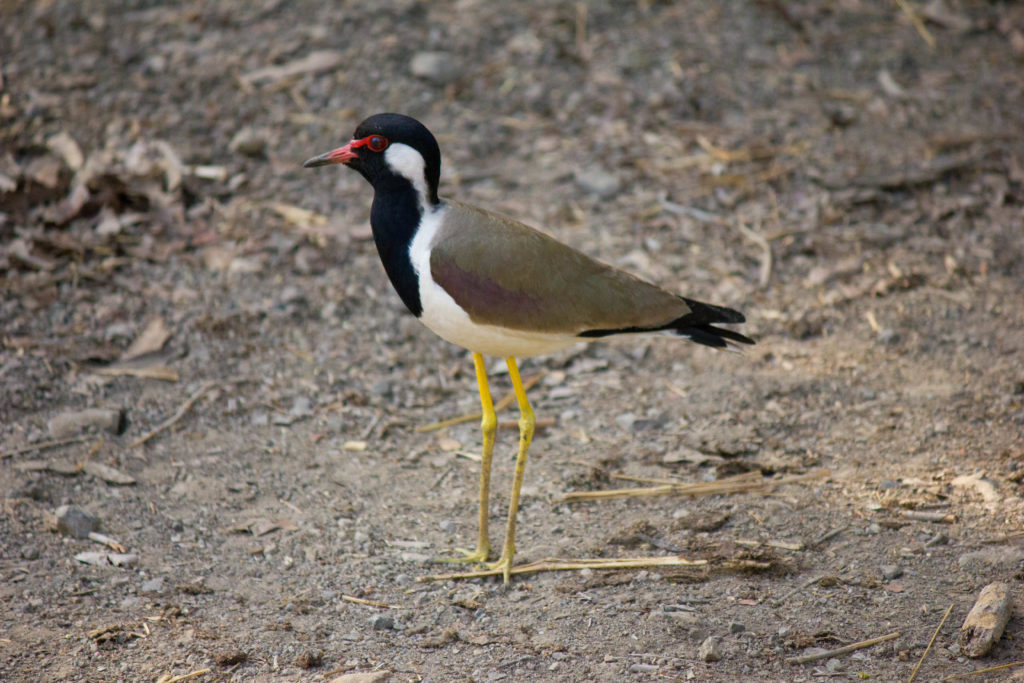
Finally a mammal in sight! One of the hundreds of Spotted Deer we saw. See what i did there? So our guide said there are over 40,000 deers in the park. No wonder, the lion population is increasing. Enough food for them right?
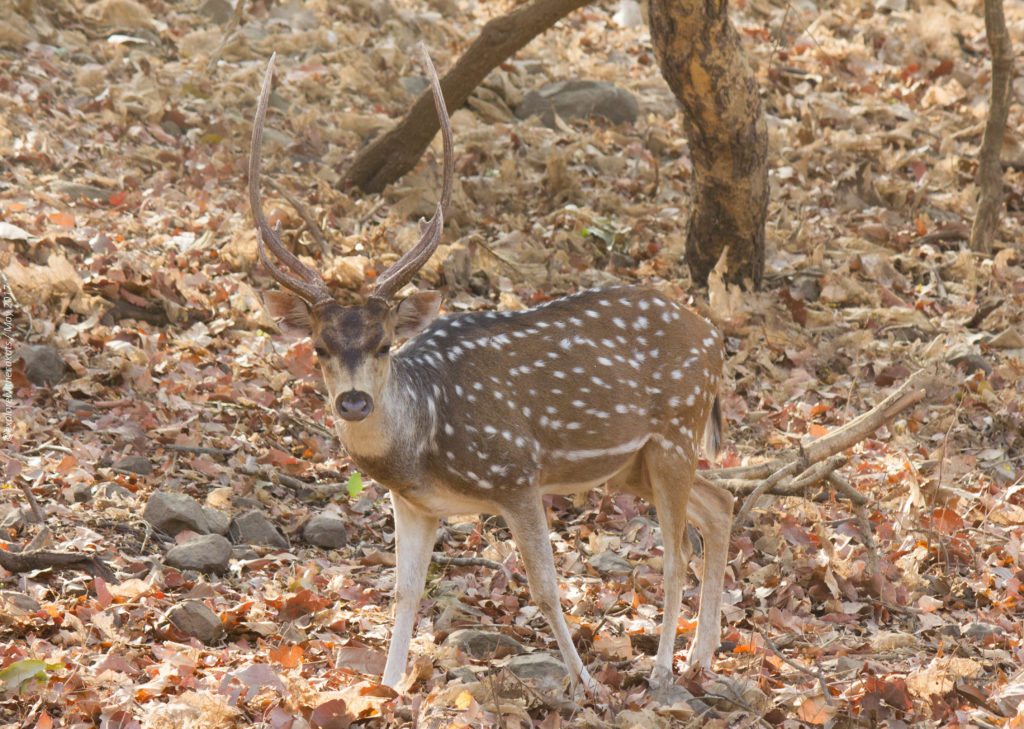
I really love the name of this bird – Tickell’s blue flycatcher. The name commemorates the British ornithologist Samuel Tickell. Such a bright metallic sheen!
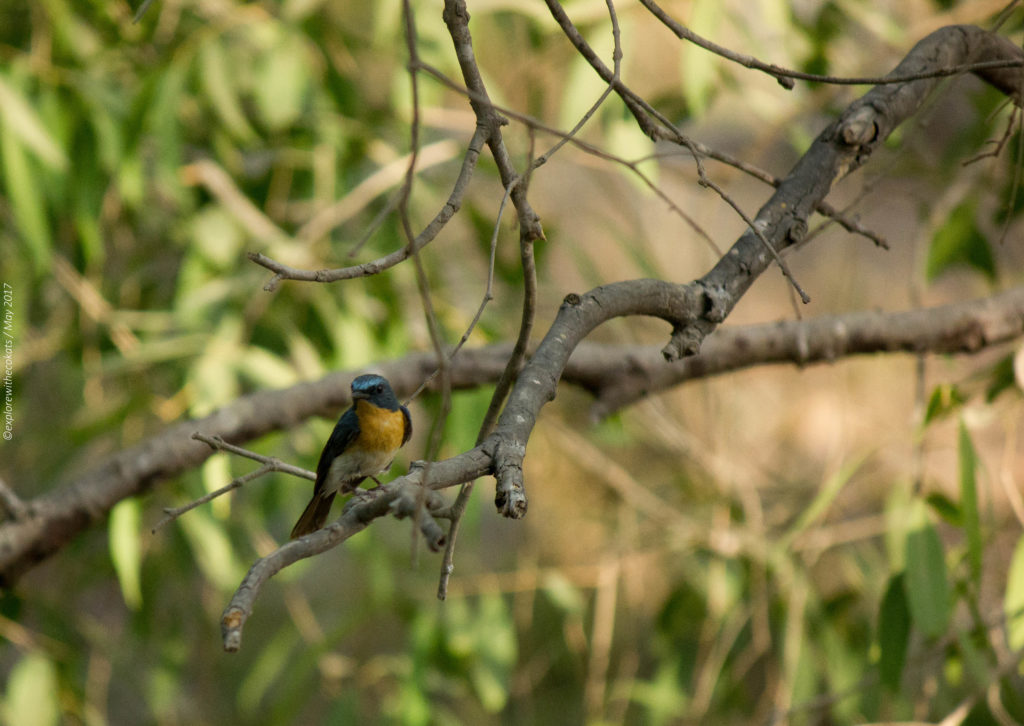
And there he was – an handsome lion of Gir National Park. He seemed to have injured himself in a territorial fight. He had an amazing aura that defied and justified that age is just a number and he’s still young at heart.
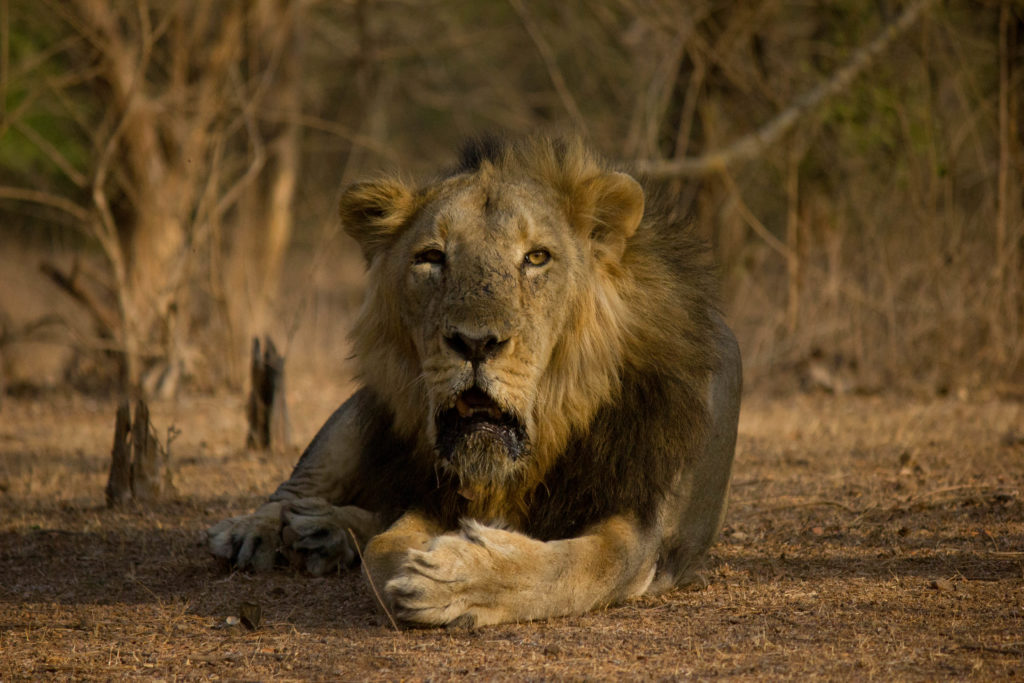
Later we came across a pride of 3 sub adult lion, 1 sub adult lioness and 2 lioness. This sub-adult lioness was just too cute and i had to photograph her. I would like to call her the Princess of Gir National Park.
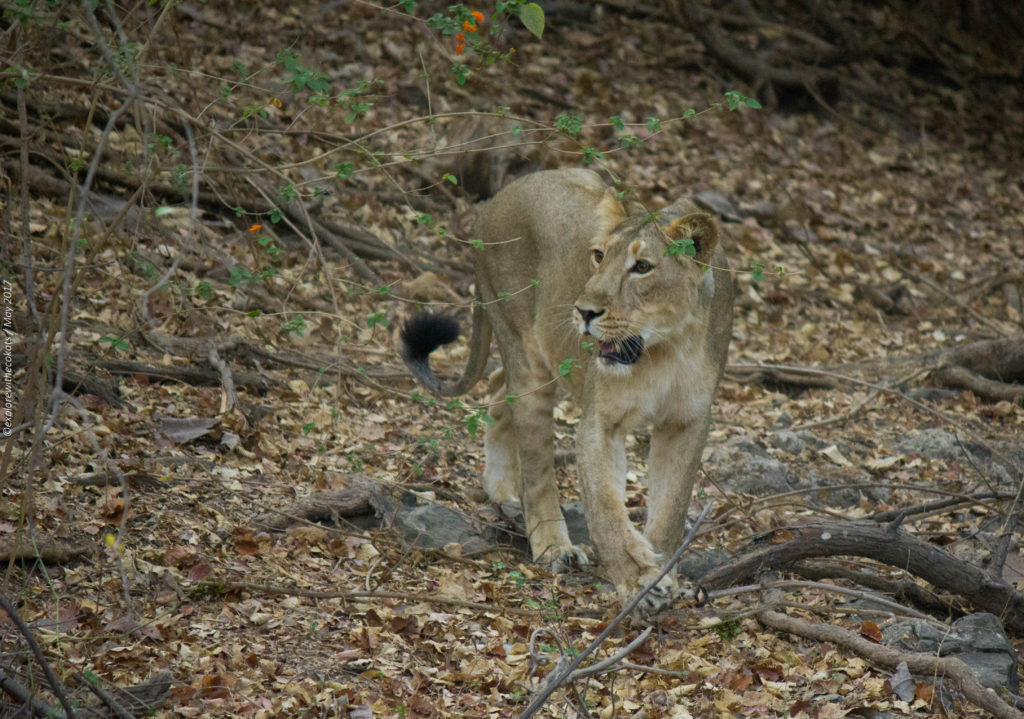
We came across 2 more prides in varying numbers and genders and were all in happy, relaxing or playful mood. Some were thirsty as well.
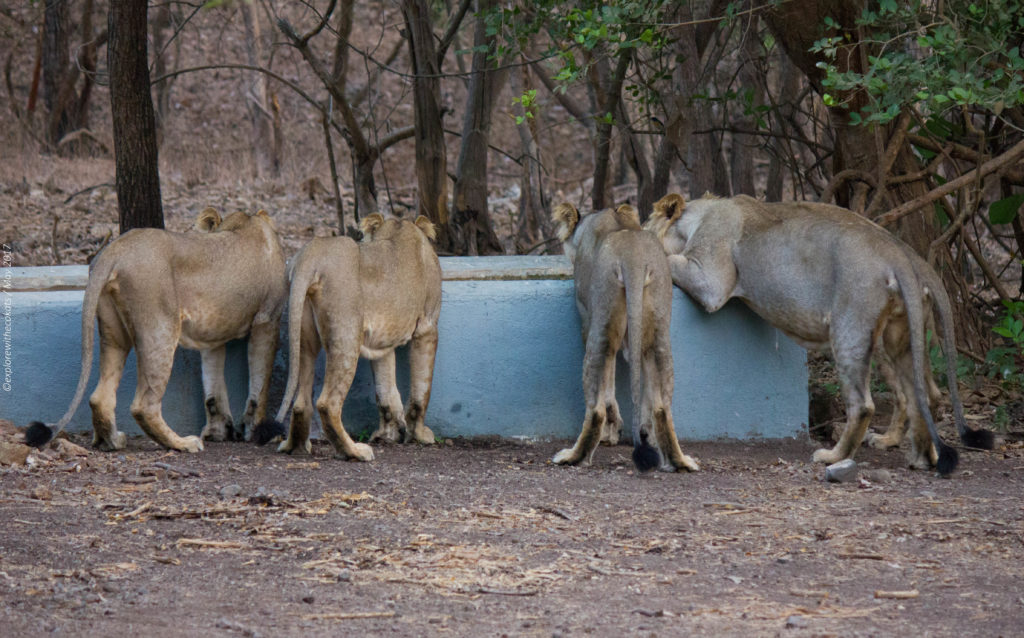
At 6:30 pm it was time to bid adieu to Gir National Park, when a gypsy ahead of us suddenly stopped near a water stream. The guide pointed to something in left direction and it took a while to spot a leopard who had come downstream to quench his thirst. Now that was an ultimate highlight of Day 1 and sad coz my camera memory card was full and i could not click his picture!!
Day 2: Route 4
We started our day 2 of Gir National Park with an early 6am safari to get some shots of morning activity (probably a hunt) of the lions. Lions tend to hunt super early in the morning and relax/sleep for rest of the day. They tend to sleep for almost 20-21 hours a day. No wonder they are called King of Jungle. We spotted fresh pugmarks which indicated a very recent passing by of a lioness.
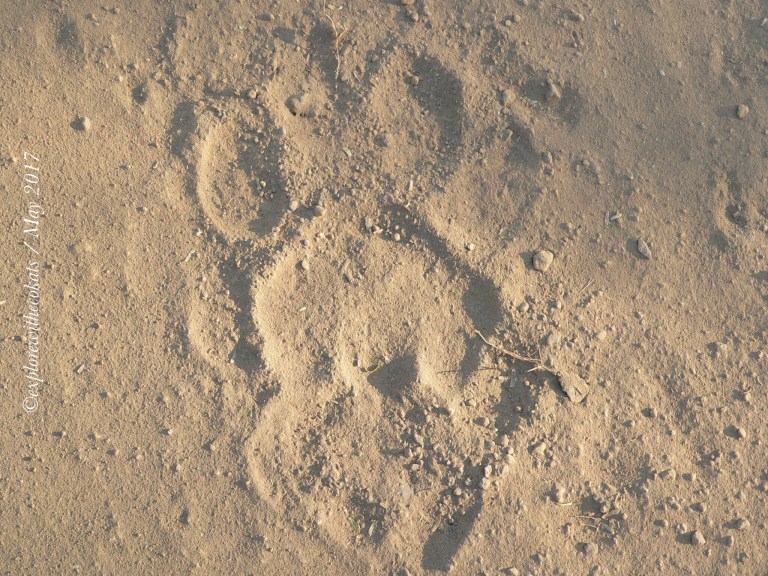
We went ahead with the hope of catching something interesting when our guide spotted this Shikra. A small raptor with sharp red eyes was on his morning prowl looking down for a rodent.
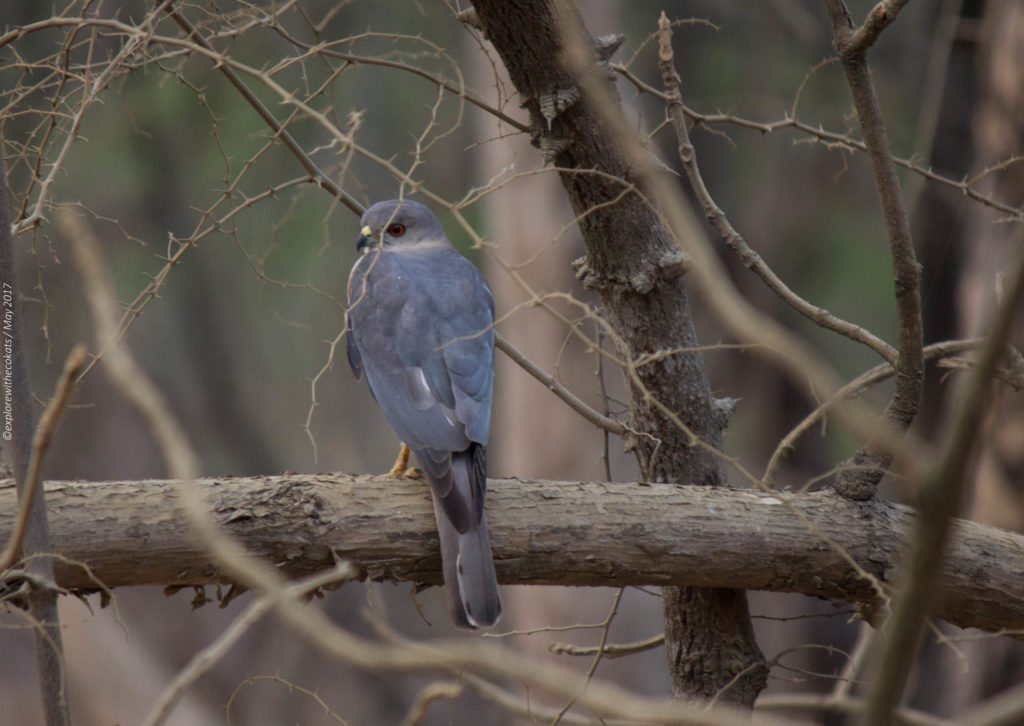
I seriously do not know these jungle guides can spot the most amazingly minute things. He spotted a pair of Yellow- crowned woodpecker making holes in the tree to get their morning breakfast of termites. And then an Indian Nightjar. Mistaken as owl, our guide spotted this highly camouflaged bird on a tree branch. Such a beauty!
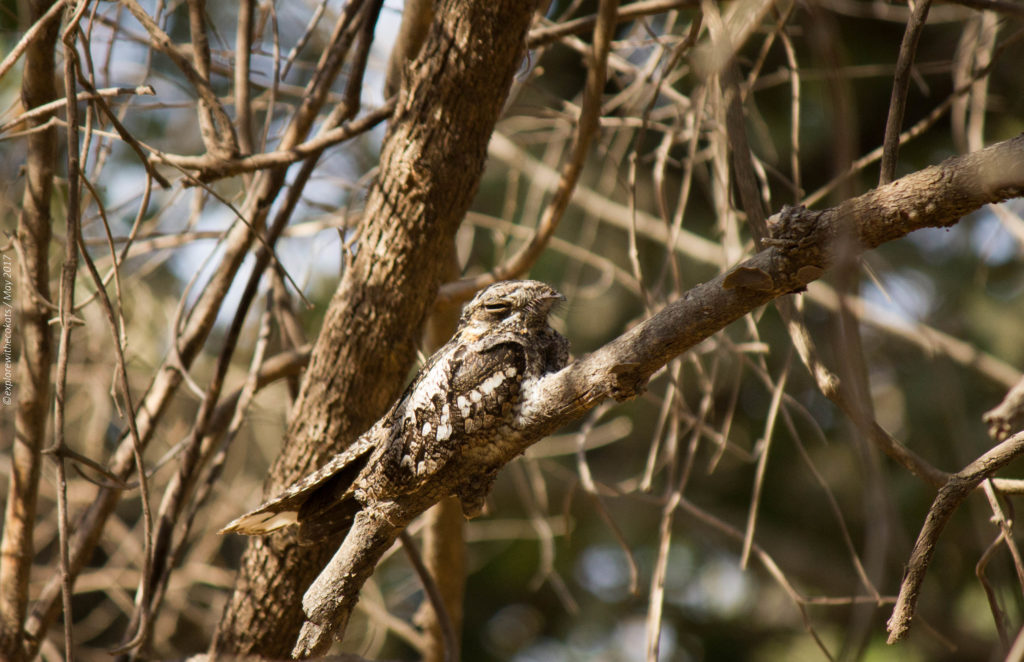
The highlight of Day 2! A young male walking besides a railway track. He eventually crossed the track. I did get some amazing shots.
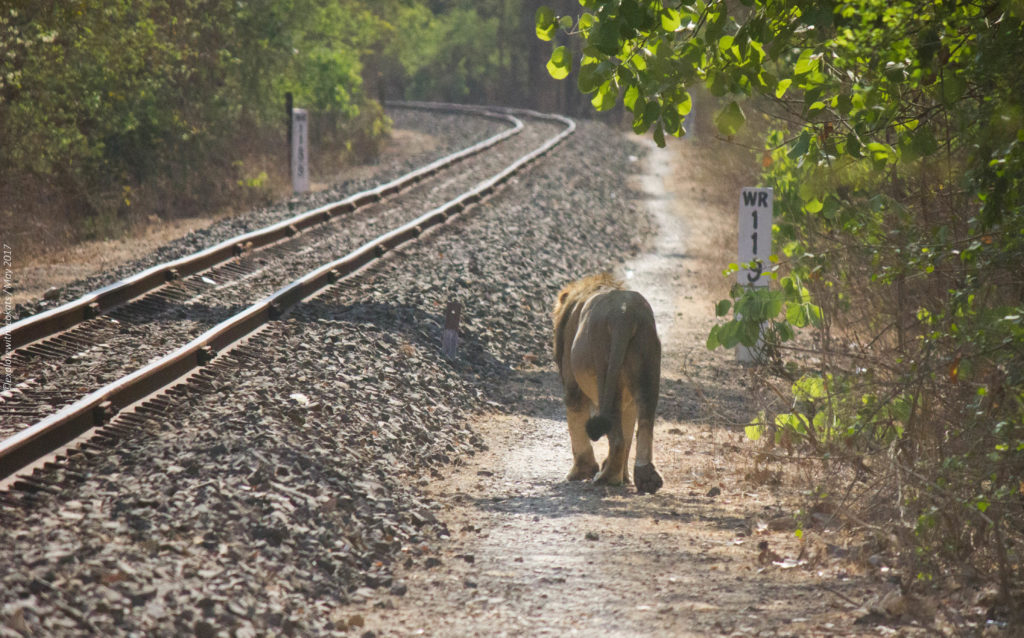
A tree hugging monitor lizard at Gir National Park.
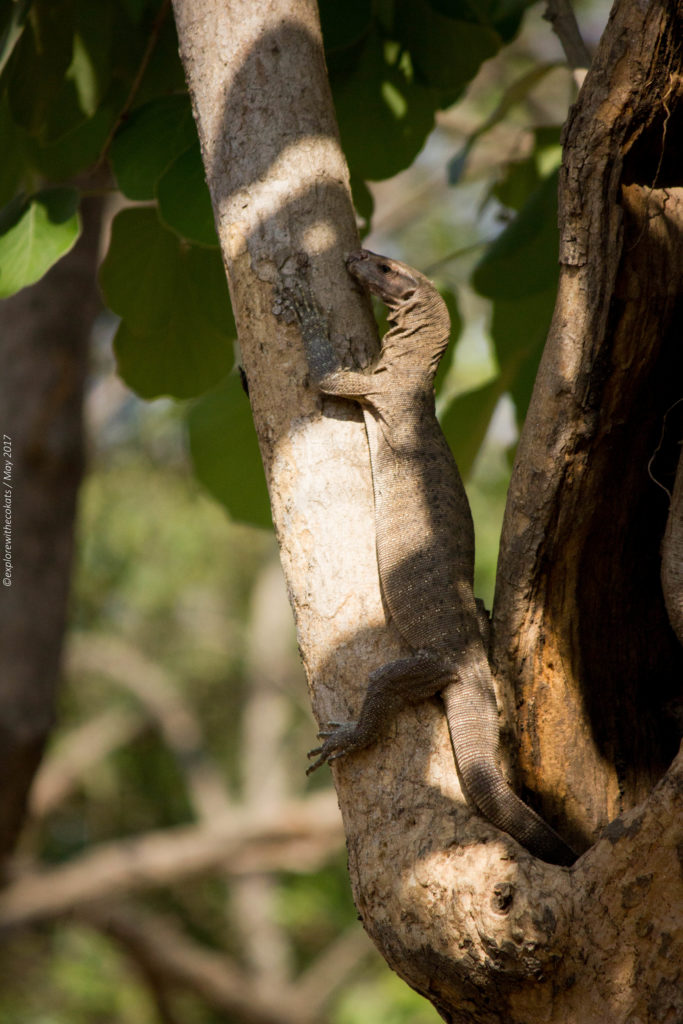
The Kamleshwar Dam, officially known as the Hiran-I Dam, is a reservoir on the Hiran river and is located within the Gir National Park. If you are lucky you may spot some Marsh crocodiles here (we didn’t).
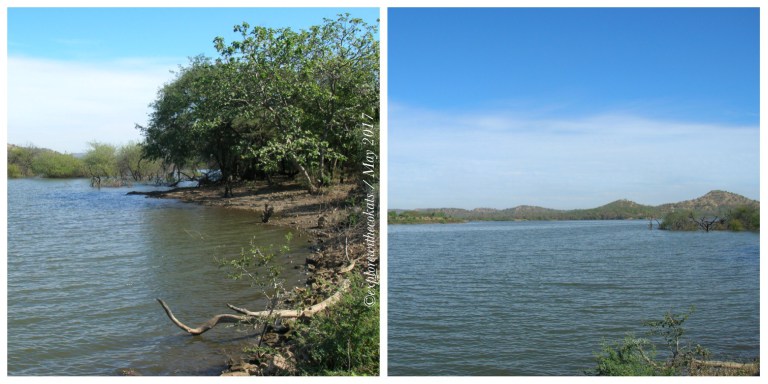
In the Gir National Park you will come across people on foot with a group of cattle grazing around.These people live among the lions and milk their cattle for a living! Known as “Maldharis”, they live in scattered settlements inside the Gir National Park and have contributed for their protection and well being since many years. Ask them if they fear the predators and they simply smile and head off!
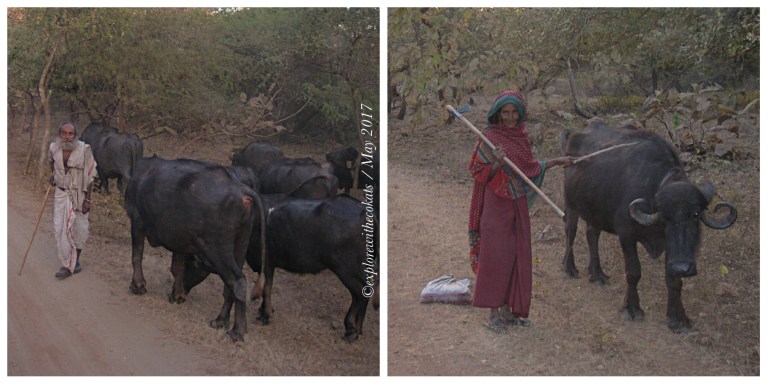
In total we saw 25 Asiatic lions and 1 leopard, a few hundred spotted deer, few sambars, 2 nilgai, 1 jackal, 1 wild boar and many birds in 2 days.
We drove back to Ahmedabad with a smile on our faces.
Also, read about Blackbuck National Park.
How to Reach Gir National Park
By Air : The nearest airports to the Gir National Park are Keshod airport and Rajkot airport.
By Train : Junagadh and Veraval railway stations are the nearest railway station from the Gir national park, located at around the same distance from the park.
By Road : The park is well-connected to some of the major cities of Gujarat by a good road. Somnath to Gir is 67 km and Dwarka to Gir is 285km. Both are must-visit destinations and can be combined along with a trip to Gir National Park.
Tips for sustainable Gir National Park trip
- Do not under any circumstances get down from your gypsy. Even if your vehicle breaks down, the guide and driver will make sure to arrange another vehicle so do not panic.
- Wear camouflage colours which will easily blend with the jungle – shades of green, brown and grey.
- It is totally understandable to get excited when you spot a wild animal in jungle. But do not make noises – whisper if necessary.
- Do not wear perfumes or body spray in the jungle.
- You will get super thirsty and hungry during a 3 hour safari. Carry water and food but do not dispose plastic or leftover food in jungle. Keep it in your bag or gypsy and dispose safely once you return to hotel.
- Do not feed anything to wild animals. Spotted deer commonly venture outside of national park boundary but you should not feed them anything.
- Try not to point out at birds. There have been instances where raptors take notice of pointing towards small, weak exotic birds and hunt them down.
- And last and not the least, respect the gypsy driver and guide. If you do not spot a wild animal do not blame them, remember you’re in a jungle and not a zoo to have surety of spotting animals.
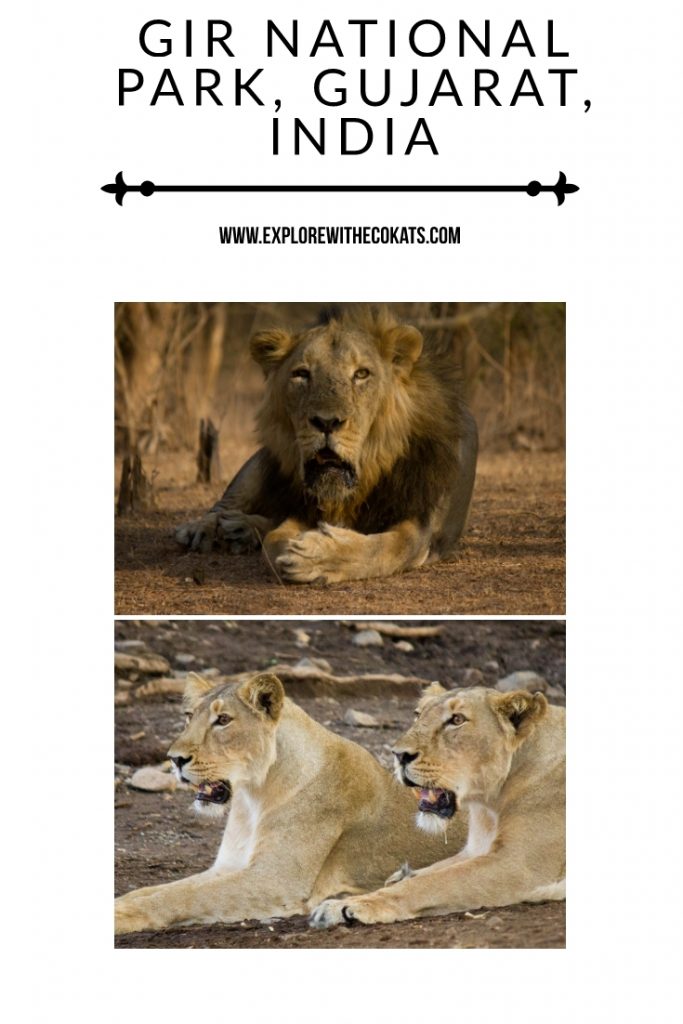


16 comments
So fascinating and awesome! This is TOTALLY something I would absolutely love to do. Wildlife is one of my top favorite things to see and photograph. Your 3 days looked amazing and you’re right, your guide did a great job spotting things I would never have noticed. I know their eyes are trained and it’s what they do all the time though, but still. Those lions are beautiful and that pawprint was huge! So the RS 3500 was total for the 3 days right? What is that in approximated USD, do you know? I’m quite interested in doing this!
Hi Heather. Rs. 3500 will work out to be approx. 50 USD and it was the cost of each safari for 2 persons. You should plan a wildlife trip to India for sure. No matter which state you go there will be something to see 🙂
What an experience! Sure, you’re crazy about seeing lions, but I’m almost more excited about the birds. Discovering them in the trees is so difficult!
Haha.. As I said spotting wildlife is like meditation for me 🙂
Incredible safari, to see so many animals, especially 25 Asiatic lions and 1 leopard! We were lucky to see leopards in Sri Lanka but lucked out with tigers in Kerala. Three different routes, pawprints, the call, but no animal in sight! Well, it makes seeing them even more memorable moments!
If you want to see tigers, you have better chances of spotting one in Madhya Pradesh state rather than Kerala. I’d recommend Bandhavgarh or Tadoba. I am sure you’ll have loads of luck there.
I love national parks but to see wildlife is an added bonus. Looks like you had an amazing experience, especially when coming across those lions! I would love to see these beautiful creatures in the wild.
What a fantastic experience! I did not know that lions slept for such long hours each day and still remain King of the Jungle. They’re such beautiful creatures, they have my full respect. It was interesting reading your tips at the bottom, like not pointing out birds to protect them from prey. I’d never even thought of that. This whole tour sounds amazing.
Jungle adventures are always amazing. Thanks for dropping by 🙂
I have not heard of this park and how awesome that you got to see so many animals out in the wild. I too like that bird’s name Tickell’s blue flycatcher 🙂 So sad that one lion was injured due to a territorial fight, but that is nature and you can’t interfere with it. Your photos came out fantastic too. My favorite is the one with the lion walking alongside the railroad tracks.
We loved this article. It is so beautiful and refreshing to see wild flora and fauna in their natural habitat. And it is appalling how most of us do not care about that sort of honest beauty anymore. Awareness is key and we love how you are spreading the message and contributing. We too, hope to do it in some manner. Also, loved the photographs, it must be such a rush to see all of them live, from near. Thanks so much for sharing 🙂
Along with a fervent desire to see tigers, I have had Gir National Park on my bucket list because as you pointed out, it is the only place in the world where you can view Asiatic lions. So awesome you were rewarded with the opportunity to see and photograph so many. The old man of the park, even if a bit scarred, looked majestic.
This looks like such an incredible weekend trip that was worth the long drive! You got some amazing shots, and I love the ones that highlight how well many of the birds are camouflaged, especially the stone-curlew and the Mottled Wood Owl. The lions are stunning and that’s amazing that their numbers have been restored, however as you say, development projects do obviously pose a risk to their future. The few people who live within the park and herd cattle must have such a unique perspective and I can’t imagine how fearless they must be! Thanks for sharing this adventure!
How incredible to see such beautiful creatures roaming wild!! Deer are ny favourite – absolutely beautiful!
[…] travel or International travel may not be safe then yet (who knows) but we certainly plan to visit Gir National Park around the year-end which is closest to our hometown. We totally deserve that stress-free […]
[…] last surviving population of the Asiatic lions in India is at the Gir National Park and Wildlife Sanctuary, which is the only abode of this cat and the only place to see them. Gir is […]